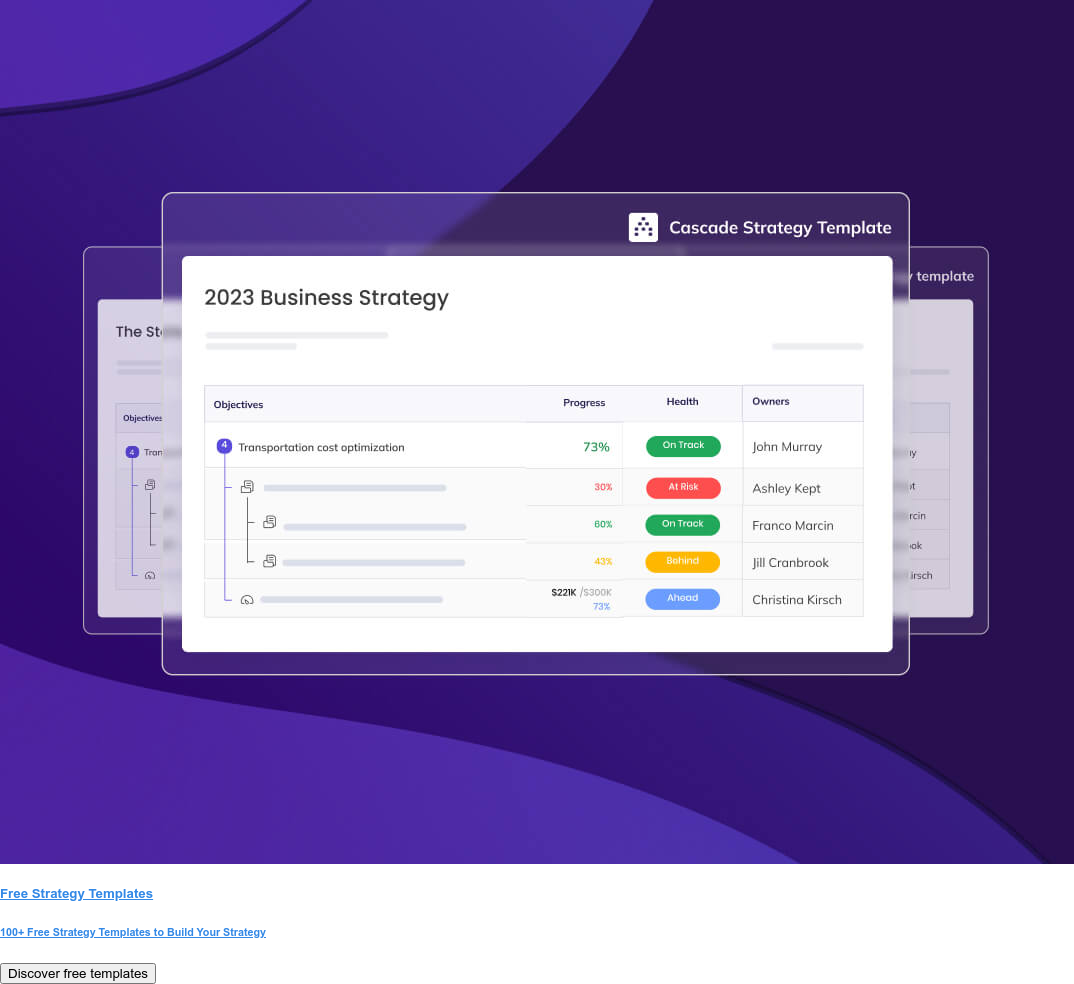Right now, leading a business is like walking on an increasingly-sharper knife’s edge - while getting everything and the kitchen sink thrown at you.
As if that’s not bad enough, leaders expect things to get worse before they get better. 65% feel that global economic conditions are worse than 6 months ago and only 29% expect things will get better in the next 6 months.
This gloomy outlook is fueled by a disruption-crowded environment and an oppressive “triple squeeze” that’s destroying growth, business strategies, and leaders’ sanity.
What’s currently happening is the compounded result of three threatening factors:
- High inflation - 90% of CEOs say inflation will significantly impact their region and 69% of CFOs believe nonlabor input costs will continue to rise.
- Scarce and expensive talent - 47% of CFOs report it’s tough to find and hire enterprise talent, while 49% of job seekers in 2021 had at least 3 job offers to consider.
- Supply chain constraints - 48% of CFOs believe supply chain volatility will continue beyond 2022 and such issues are increasingly more likely to lead to customer disloyalty.
Add the unstable geopolitical situation plus the looming recession and it’s no wonder that many companies are losing millions of dollars, letting people go, and being taken over by conglomerates.
So…
How the hell are you supposed to prepare a solid business strategy under these crazy circumstances?
It seems like a herculean task, but someone has to do it. Someone has to save the company and its employees. It’s the leader’s responsibility to do something, right?
That’s what many executives think as they take on the role of the hero and start solving the conundrum by themselves.
While your intentions might be heroic, that’s exactly what you shouldn’t do.
Heroes make things worse and can’t save the day
Why?
Take a look at these numbers:

Via Cascade’s Strategy Report 2022: You're doomed or you adapt
While playing the traditional role of a hero, leaders tend to leave everyone outside their C-level circle behind. And this is bad - real bad.
See how 63% of C-suite/Executives engage with the strategy weekly, while this is only true for 18% of Team members? There is a 45% gap, and it's just getting bigger.
Remember how we mentioned it’s hard to hire talent? Such disengagement starts a downward spiral. It’s costing you top talent.
At least 50% of your employees who don’t understand or care about the strategy are ready to quit their jobs. Each employee that earns $60,000 per year will cost the company anywhere from $30,000 to $45,000 to replace. If you can find the replacement.
That’s only the tip of the iceberg. An isolated strategy impacts your business on every level. Employees that don’t understand it won’t execute it - and nothing in the strategic plan matters unless it is executed. Even the greatest business strategy is just a bunch of words if it’s not being put to use.
That’s why playing a hero costs money. A lot of it. It impedes business growth, increases employee turnover, and makes the company much less resilient. And in trying times, it can easily doom the organization. Because even a hero can’t be everywhere at once and know everything that’s going on.
It’s 2022 - about time we focus on making everyone a strategist, instead of having a single hero!
As Thomas Thiré, Head of Technology Strategy and Transformation at Mastercard, said during the StrategyFest:
The goal of every leader should be to get the strategy out of the boardroom and inspire teams to deliver the strategy they helped to create.
Why you absolutely need to listen to your ecosystem
While everything around business strategy underwent radical changes, the way most leaders go about creating a plan hasn’t significantly changed. The romantic idea of the chosen visionary who crafts a perfect strategy still persists.
It became popular when companies were still very vertical entities. But today, they are huge, intricate, and interconnected ecosystems.
Because of that, each change in the global or local environment is more pervasive than ever - it touches more people, is transmitted further, and can easily have an unanticipated business impact.
Combine this with monumental events that are occurring and it’s clear that we have to go beyond trying to anticipate and predict everything that’s going to happen.
Sure, you still need a plan, but you also need to quickly sense and act on unforeseen futures.
That’s something a sole leader or a narrow group of executives can’t do in an increasingly more complex business environment.
As Ankur Gupta, a business strategy advisor in the corporate strategy team at FedEx, pointed out during StrategyFest:
You want to have a process that isn’t fully mature and inflexible, but is ever-evolving. For that, strategy needs to be democratized.
That means engaging and listening to your business ecosystem.
People close to the work have the potential to come up with more and better ideas for their specific departments and jobs than anyone at a centralized strategic function. They might know how to optimize your supply chain in a way you’d never think of - but you won’t learn it unless you listen.
To use such collective knowledge, leaders need to yield a measure of control to the ecosystem. They need to empower employees to be flexible in pursuit of strategic objectives. That’s often the toughest part, but it’s absolutely crucial. Otherwise, the most precious insights might already become too generalized to be useful by the time they reach you.
So let’s see how you can make strategy everyone’s business and empower your people by putting 3 key shifts into practice.
Shift #1: From exclusivity to transparency
Achieving strategic clarity and open communication is the first and biggest step towards an engaging strategy that’s going to get executed. Merely sharing a Powerpoint presentation is not nearly enough.
So how should you go about it?
Actively expose your strategy to all stakeholders. Communicate the bigger picture and your logic behind the choices. Main strategic objectives should be crystal clear to everyone.
Then get people’s input. You can do this by running regular all-hands meetings where you gather all employees and share key updates on important activities and ask for possible improvements.
Once people understand what needs to be done and why, they can tell you what it will take to do it. And when you take that feedback into account, they’re much more likely to follow the plan.
Shift #2: From out-of-sync to aligned
Agree with your team to share a weekly update about strategy progress and emerging blockers. It’s a perfect chance to re-align, re-focus, adapt, clarify and continuously improve the execution process. It also empowers people to take ownership of strategic objectives.
Make sure you set clear expectations, such as:
- Format and channel (video clip, text, e-mail, post in the Slack/Teams channel, meeting, etc.)
- What needs to be included in the update (key updates and insights, important KPIs, setbacks, weekly focuses, do they need help from other team members, etc.)
- Deadline
- Bonus: Always communicate the “why” behind updates and drive focus.
Introduce a tool or a process that makes it easy to check the progression of strategic objectives on an individual’s and team’s level.
That way you’ll create positive accountability and stop wasting resources and funds on duplicated efforts and people going off-track.
Knowing one's priorities and being able to observe goal progression in real-time boosts engagement and helps people reject unnecessary meetings and requests. In a way, it’s liberating as it eliminates uncertainty.
Shift #3: From top-down to omnidirectional
The benefit of democratizing strategy is the diversity of thoughts and perspectives that come with it. By including a larger group in the strategizing process, you essentially create a microcosm and get a holistic view of the various departments in the organization. It is this culture that will ensure that the organization can easily adapt to any scenario with the best possible outcome.
That’s how Ankur Gupta explains why an omnidirectional strategic process is superior to a traditional top-down way of doing things.
But to make such a process effective, a company needs an anchor - a common vision. That’s why Shift #1 is so important. You must make sure everyone clearly understands the main strategic objectives. Otherwise, things will get messy.
Once strategic objectives are clear, help employees challenge the status quo with a few pointers.
First, ensure that everyone makes “optimization” their new default. Habits in organizations are notoriously sticky and persistent. Get people to identify key processes and explicitly ask the question “Why do we do it this way?”. If the answer is along the lines of “That’s how we’ve always done it,” it may be a prime candidate for change.
You also have to encourage open communication. Don't take your employees' efforts or ideas for granted. Recognize and celebrate "strategic" behaviors.
Success lies in the small things people do every day - like people sharing insights from customer interactions or improving small processes to be more efficient. Recognizing and rewarding such behavior has a big impact and individuals know their work doesn’t go unnoticed.
For example, take notes of your team's achievements on a monthly basis. Thank every team member by name and point out the progress they’ve made. You can do it in a short video and share it in your team’s chat or with individuals. Don’t underestimate the power of appreciation.
It’ll help everyone feel valued and encourage them to share ideas and opportunities.
Make yourself a strategic leader, not a fragile hero
Using the whole business ecosystem as a partner and guide when creating a strategy is not an easy choice to make.
You must become comfortable with yielding at least some control, but in return, you get agility, resilience, and new opportunities.
The most important thing leaders need to do is to start communicating strategic decisions with employees. Transparent and consistent communication can make all the difference between scrambling to survive and doing exactly what needs to be done to succeed during the most challenging times.
Take a look at the report below. It shows just how doomed the current strategy situation is. You can see how leaders have monopolized the strategy and the indicators why this will end catastrophically - especially in current times.
You’ll also notice how making a business strategy everyone’s business improves critical areas that might otherwise doom a strategy and its execution.






.png)
.jpg)
.jpg)



